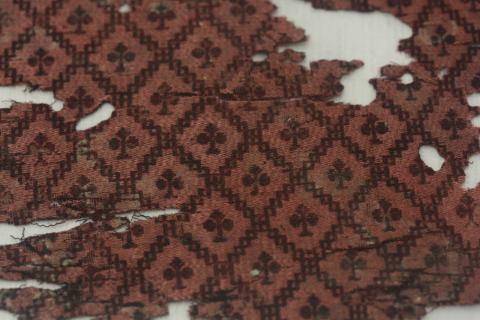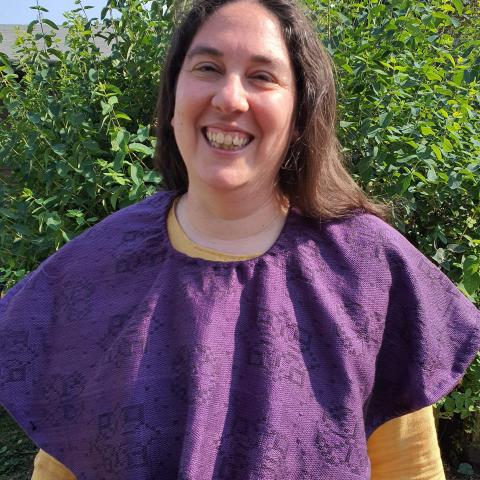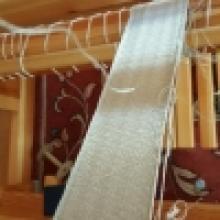2128-1900 700-1000 possibly Syrian woven silk (damask)Reference Number: 2128-1900Date: 700-1000Culture: SyrianTechnique: DamaskSettPPINotes: purple on light purple background Museum description “A fragment of damask in bold purple and black. Possibly Syrian or Byzantine, ca. AD700-1000. Z-spun with brown warps. The design includes floral and geometric forms. The remaining form is like a large raspberry or flower bud hanging down. The fabric is badly damaged and the rest of the design is not obvious although there are some geometric lines around the bud that contain fleur-de-lis. The piece may have been hemmed around the edges or has been sewn to something else in the past. A damask is a reversible fabric of silk (also wool, linen or cotton) with a pattern formed from one warp and one weft. The pattern is in a warp-faced, satin weave with the background in weft-faced, sateen weave. Often with large floral designs. Damask was produced in ancient China but took it’s name from Damascus, Syria, where it was produced for European export in the 12th century.” 10" tall and. 5" wide Palmette 5.25" tall 4.5" wide 10 warp threads showing in .25" palmette leaf 1" tallphoto 147Photo reference numbers 146
The Clothworkers' Centre for the Study and Conservation of Textiles and Fashion


